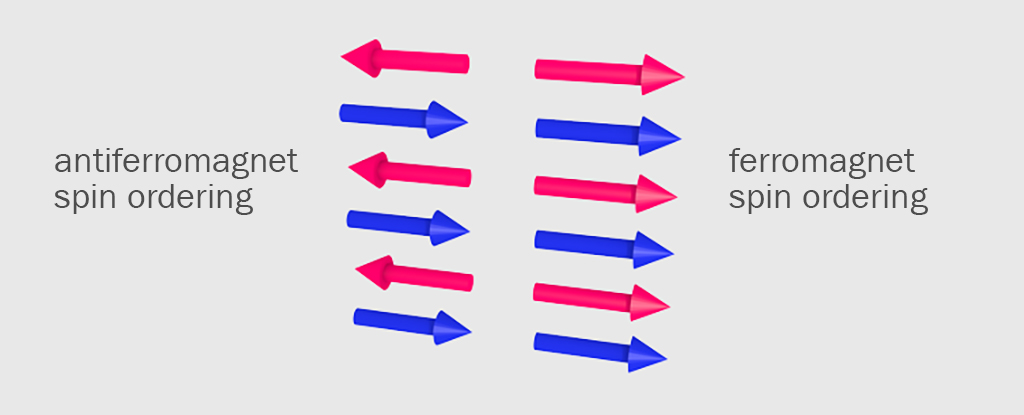When it comes to digital data storage, our thirst is unquenchable: today's most advanced software programs, from neural network simulators to weather forecasting applications, need more room than ever before, and that's before you get to all the photos, music, and videos we're generating every single day.
But now an international team of researchers working at the Diamond Light Source in the UK think they might have found the answer to our ongoing storage needs in a technology called spintronics, which offers some useful properties for recording our 1s and 0s, including significant boosts in data storage density.
For the first time, the researchers looked at the potential of using antiferromagnetic materials as magnetic storage media.
Each atom has a property called 'spin', which you can think of as a microscopic bar magnet, with a north and south pole. In antiferromagnetic materials, these spins are arranged head-to-toe, cancelling out any external magnetic field.
Normally, data bits are stored by using an electric current to flip the orientation of the spins. As the arrangement in antiferromagnetic materials does not allow this, the researchers have come up with a novel way of rotating pairs of spins rather than flipping them to store data.
Basically, the spin of electrons rather than their charge is used to map out the 1s and 0s of our data.
 Diamond Light Source
Diamond Light Source
That's the science, but here are the main benefits. First of all, there's no density change in the current compared with the data storage devices we use today, so upgrading should become easier. Secondly, the antiferromagnetic materials don't emit an external magnetic field, so there's less chance of devices interfering with other equipment or being spied on.
A lack of magnetic field also means individual regions can be packed very close together, giving us more data in less space. Information can also remain intact without power, and can be written and read at room temperature - all boxes that need ticking when you're investigating the potential of a next-generation storage technology.
The spintronics approach has the potential to increase read and write times by a factor of up to 1,000, according to the team, and the materials we're talking about are pretty straightforward to make. The team has so far been experimenting with a thin film of antiferromagnetic copper manganese arsenide (CuMnAs) but think more suitable materials are also out there.
It's going to be a good while before spintronics arrive in laptops and phones, but the potential is definitely there. "The physics is beautiful but complex yet the practice is relatively simple," said the lead researcher on the project, Peter Wadley.
The team's work has been published in Science.
